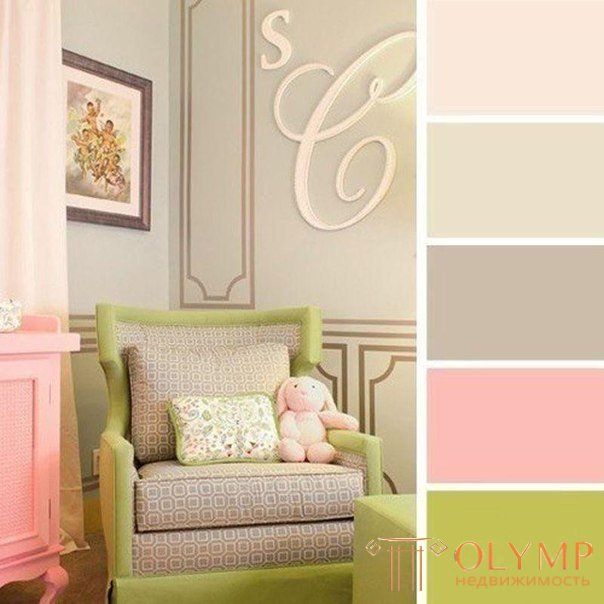
In tones of pastel light more than in any other colors. The light here changes and moves, creating the finest nuances from light and airy shades to exquisitely sublime. When pastel shades of the same intensity are taken in pairs or mixed with the flashing white on the printed page or in the interior, an illusion of increasing space arises and small objects appear larger. Pastel colors are clear evidence of the connection between color and light. Any pastel shades harmoniously look with pure white. They also combine well with the same tone, but a different intensity, natural gamut, bright colors and a wide range of neutral colors. To achieve a good result when mixing pastel tones with other colors, it is enough to know just a few basic principles of proper mixing and color combination.
Let's look at the color wheel, traditionally divided into two parts - warm and cold. For the warm part of the color wheel is characterized by red, orange and yellow shades, it is considered active and exciting. The cold part includes colors from green and blue to the coldest shades of purple and is considered passive and soothing. Each side of the circle represents a specific set of emotions. The main colors in the painting are red, yellow and blue - pigments, the mixture of which is obtained by all the other colors. When mixing two primary colors, composite colors appear - orange, green and purple. By mixing the primary and composite colors, complex colors are obtained: red-orange, yellow-orange, yellow-green, blue-green, blue-violet and red-violet. Having understood the structure of the color wheel, you can select harmonious and natural combinations of one or more colors, mix them up and create successful color palettes that do not contradict the laws of color.
A monochromatic combination of pastel colors is easy to create; you just need to combine any tone of the pastel scale with its shades of varying intensity. In the monochromatic series, the pastel colors look especially harmonious. Different pastel colors are almost always combined with each other, easily perceived and delight the soul. One of the characteristics of the pastel tone is its intensity. In the monochromatic series, such tones vary from barely noticeable and almost white to the most saturated shades (with the minimum impurity of white). As a model of a monochromatic palette, flower petals can be represented. For example, the petal of a tulip, with a rich saturated color at its base, gradually turning into a more faded shade that fades more and more as it approaches the tip of the petal.
A win-win combination is the combination of three related (adjacent) pastel colors from the color wheel. For example, try to take blue blue-violet and purple. Along with all its nuances and nuances, this trio is a modern palette, characterized by icy cool tones that are in harmony with warm ones and create a feeling of measured and sophisticated. Make the combination more contrasting by combining any intense pastel tone with its opposite color on the color wheel. Use the color on the color wheel directly to the left or to the right of the additional one to create a sophisticated combination that is called complex
watercolor translucency of the most subtle pastel shades that is difficult to convey in words can be used to soften and enhance neutral tones. The neutral properties of various metallic and woody colors in combination with a pastel scale will be very effective, and the pastel colors themselves will greatly benefit from this combination. For example, a subdued light blue color produces transparent blue-gray tones when combined with a metallic color. This color may also acquire a slightly pinkish tint if it is placed next to the color of natural, untreated wood or polished pine, which gives the same pale light blue a feeling of comfort in a modern home. In combination with natural tones, pastel gamma creates a soothing, smoothing and soothing mood. To add pastel palette of interest and thrill, you can use bright colors as accents. Pastel colors are a stable background for such bright accents as lemon color, for example, against the background of the color of melted milk, which allows you to get an amazing color contrast, lively and bright. Use all the richness of pastel colors to create new soothing and elevating spirit combinations and palettes.

Color is in fact the visual perception of a light beam reflected from an object. Lighting affects our perception of color in many ways. Artificial lighting often gives the color a green or yellow hue, while the same color in natural daylight will appear pure and real. Choose and mix colors according to the environment in which they will be used.
Что бы оставить комментарий войдите
Комментарии (0)